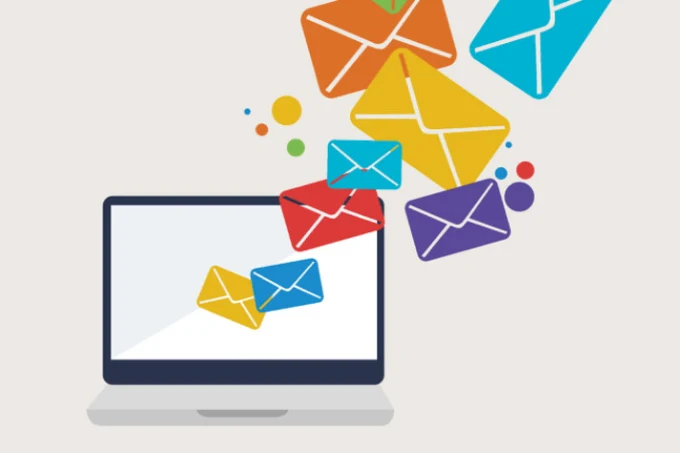Introduction: Start with Trust, Not Trouble
When launching an email campaign, your goal is clear you want your messages to reach the inbox, get opened, and prompt action. However, many marketers overlook one essential step: the Email Warm-Up process. Without it, your emails could immediately land in the spam folder, get ignored, or even cause long-term damage to your sender reputation. Fortunately, with the right approach, you can prevent all of that.
Email warm-up allows your domain to establish trust before you increase email volume. It mimics natural email behavior so that inbox providers such as Gmail, Outlook, and Yahoo recognize your domain as reliable. Let’s explore how this works, why it’s critical, and how to do it properly.
What Exactly Is Email Warm-Up?
In the simplest terms, email warm-up is the process of gradually increasing your email sending volume from a new or inactive domain. Instead of blasting hundreds of emails on day one, you start small and scale gradually. As a result, mailbox providers begin to trust your domain based on consistent and responsible sending behavior.
Email providers closely monitor sender activity. Sudden spikes in volume or high bounce rates are red flags. By warming up, you give providers a chance to observe that you’re legitimate, active, and professional not a spammer.
Why Skipping Email Warm-Up Leads to Failure
Neglecting warm-up is like driving without a license it may work for a while, but you’ll eventually crash. If you send bulk emails without warm-up, here’s what can go wrong:
- Your emails may be flagged as spam immediately.
- Providers may throttle or block your sending.
- Your domain reputation can suffer for months.
- Bounce rates may spike, triggering further delivery issues.
Therefore, skipping the warm-up phase isn’t just risky it’s costly.
Benefits of a Proper Email Warm-Up
A proper warm-up process does much more than increase open rates. In fact, it affects every element of your outreach strategy. Here’s what you gain:
- Higher deliverability: Your messages land in inboxes, not junk folders.
- Improved reputation: ISPs recognize you as a safe sender.
- More engagement: Real people see, read, and respond to your emails.
- Reduced bounce rate: You send to healthy, verified inboxes.
Each benefit compounds over time, which is why starting right matters so much.
Step-by-Step: How to Warm Up Your Email Domain
To fully benefit from email warm-up, you need to follow a phased and structured approach. Here’s a comprehensive breakdown:
Step 1: Set Up Your Technical Records
Before you send anything, you must configure the technical backbone of your domain:
- SPF: Authorizes your domain to send emails.
- DKIM: Ensures message integrity and proves authenticity.
- DMARC: Protects against spoofing and phishing.
Correct setup of these records dramatically improves trust and delivery performance.
Step 2: Start Slow and Stay Consistent
On day one, send no more than 10–20 emails. Focus on quality, not quantity. As each day passes, increase your volume slowly, ideally by no more than 20% daily. This consistent pacing mimics normal behavior and avoids suspicion.
Step 3: Choose High-Engagement Recipients
Send your warm-up emails to users who are likely to open, reply, and engage. Friends, colleagues, or test accounts are great starters. Engagement signals like opens, replies, and forwards help build credibility.
Step 4: Monitor Your Progress
Track key metrics throughout the process:
- Open and reply rates
- Bounce rate
- Spam reports
- Blacklist appearances
Adjust as necessary. For instance, if spam complaints rise, slow down or pause sending.
Automate Warm-Up with Boost Inbox
Manual email warm-up takes time and effort. Fortunately, Boost Inbox offers a fully automated solution. It sends real-looking emails between your account and other real inboxes in a network of verified senders. It also manages replies and deletes sent messages from spam if they land there.
You don’t just save time you improve results. With Boost Inbox, your email address interacts like a real human would, increasing trust naturally and effectively.
Top Mistakes to Avoid
Even with good intentions, many people make mistakes during warm-up. Here are some to avoid:
- Jumping ahead too quickly: Stick to the daily sending limit increase.
- Sending to poor-quality lists: Focus on engaged recipients.
- Ignoring metrics: Keep an eye on your performance to avoid issues.
- Skipping technical setup: Never skip SPF, DKIM, and DMARC.
Remember, email warm-up is not a race it’s a process.
Maintaining Reputation After Warm-Up
Once you complete your warm-up, don’t stop there. You must continue good practices to maintain your domain health:
- Keep bounce rates low
- Regularly clean your list
- Avoid spam-trigger words
- Stay consistent with sending patterns
- Send valuable, relevant content
Consistency, more than volume, will keep your domain performing well.
Final Thoughts: Build a Healthy Email Future
By starting with an effective email warm-up strategy, you lay the groundwork for a successful and sustainable email marketing program. With the right tools and habits, you can dramatically improve deliverability, boost open rates, and protect your domain from reputation damage. Use services like Boost Inbox to automate the process, maintain quality, and scale safely.
Warm up right, and every email you send will work harder for you.
